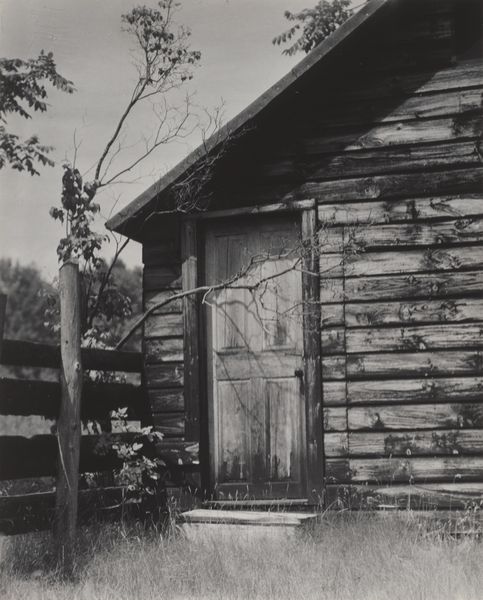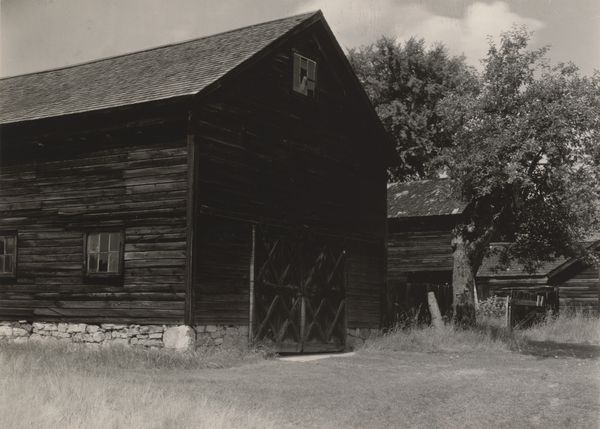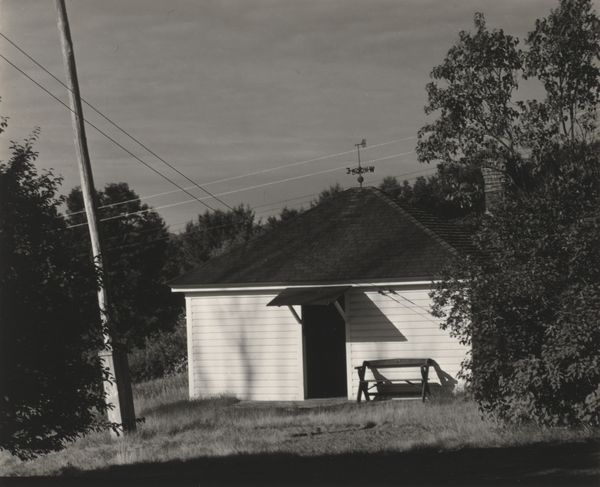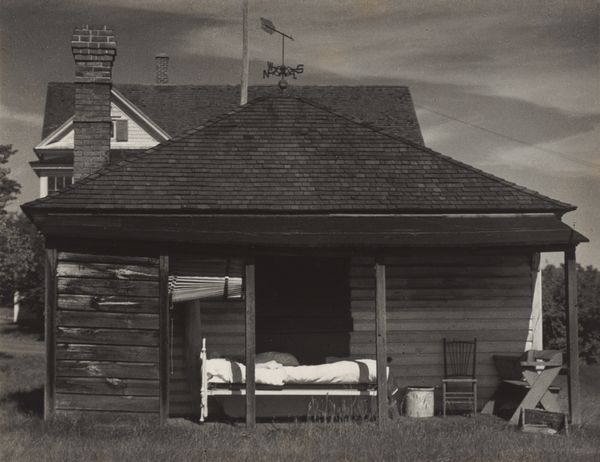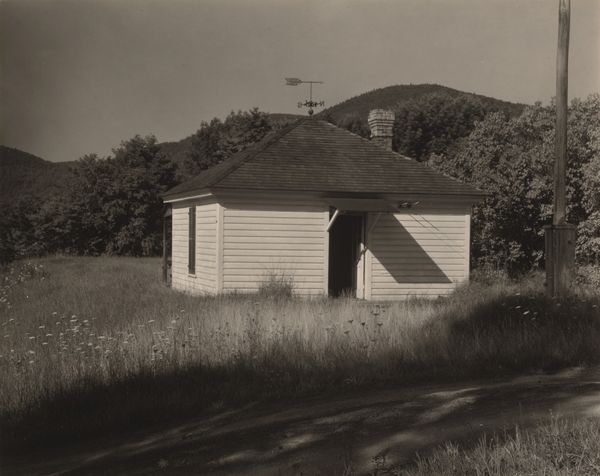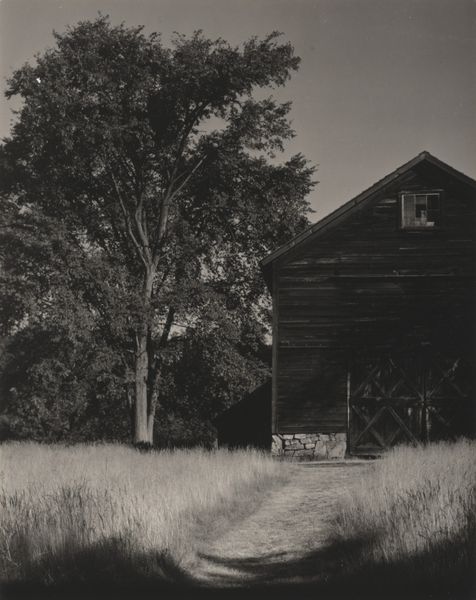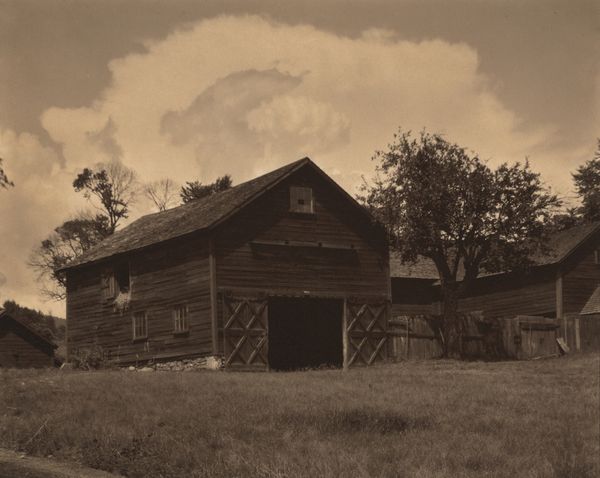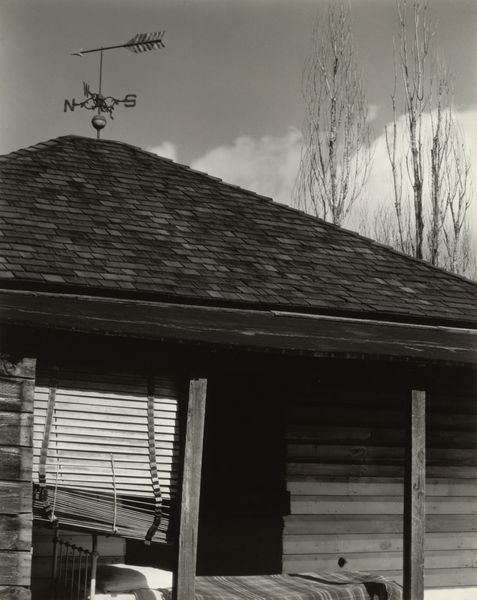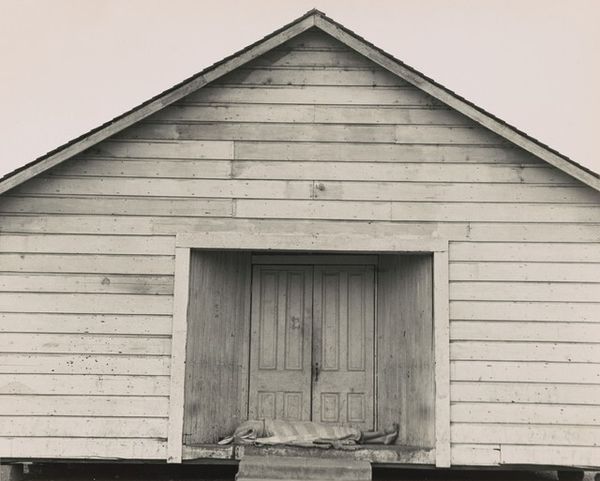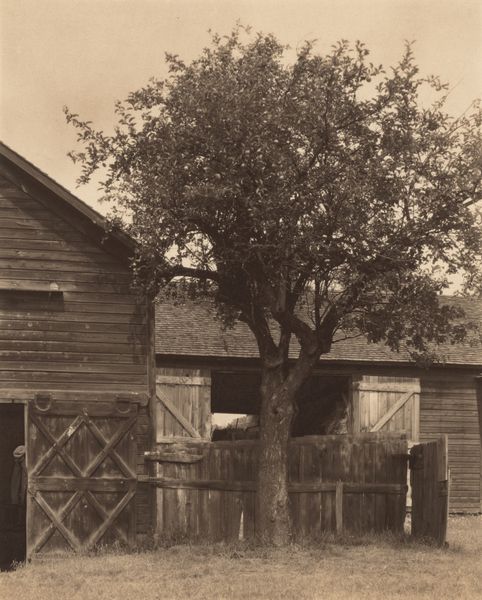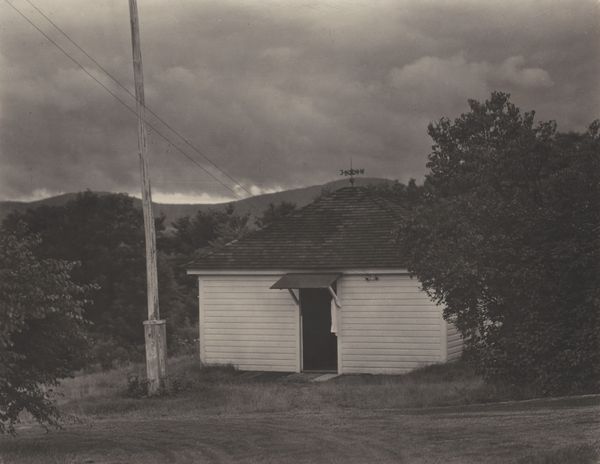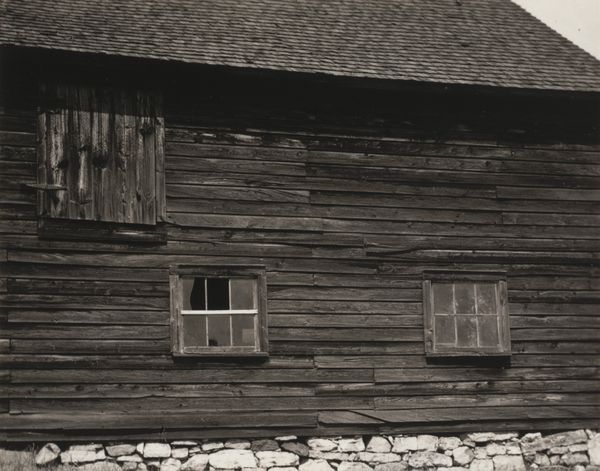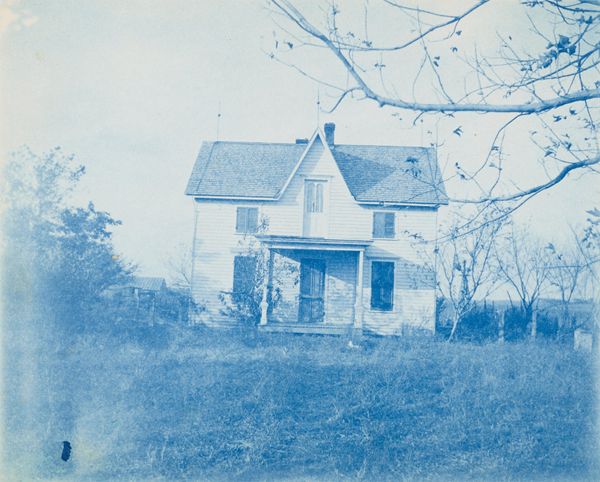
photography
#
landscape
#
photography
#
modernism
#
realism
#
monochrome
Dimensions: image (Stieglitz window mat): 18.9 × 23.9 cm (7 7/16 × 9 7/16 in.) mount: 56.4 × 46.1 cm (22 3/16 × 18 1/8 in.)
Copyright: National Gallery of Art: CC0 1.0
Curator: Alfred Stieglitz created this photograph, simply titled "The Barn," in 1922. It presents a straightforward depiction of rural architecture in monochrome. Editor: My first thought is: quiet desolation. The building has a severe, almost guarded, presence. And the tall tree trunk on the left seems to be guarding it. Curator: It’s interesting you say "guarded." Stieglitz was, after this time, very engaged with the concept of equivalency – presenting images that represented internal states, which speaks to a very potent form of symbolic guarding in its way. Also he was positioning photography as fine art during a key period in its development, challenging academic structures by claiming legitimacy for it in museum contexts. Editor: Absolutely. Even something as plain as a barn carries potent symbols. Notice the simple geometry and lack of ornament that seems archetypal; and the barely visible curtains, the gate…these markers of private life. These suggest universal concepts such as privacy, labor, and connection to nature. What makes it resonate with people on a gut level, not necessarily about that period? Curator: His earlier association with Pictorialism certainly softened into sharp focus by this time. Stieglitz moved from manipulated, painterly prints toward straight photography, capturing scenes with clarity. I also wonder what the social perception was; were there romanticizing tendencies, a push for more localized narratives in art practice at that moment? The reality and its depiction here were tied to these social constructs about a changing time. Editor: It has such stark realism, that invites multiple readings, I believe. And this monochrome palette emphasizes form and texture. As for emotional impact, it's profound how Stieglitz uses these everyday objects, imbued with symbols that trigger responses, far beyond any specific moment of making. It’s still in our visual vocabulary. Curator: Precisely. We're constantly negotiating the borders of photographic symbolism and realistic visual language. Looking at "The Barn" encourages that ongoing discussion about photography's role within and outside art history. Editor: Yes, an intriguing dialogue with a barn nonetheless.
Comments
No comments
Be the first to comment and join the conversation on the ultimate creative platform.
